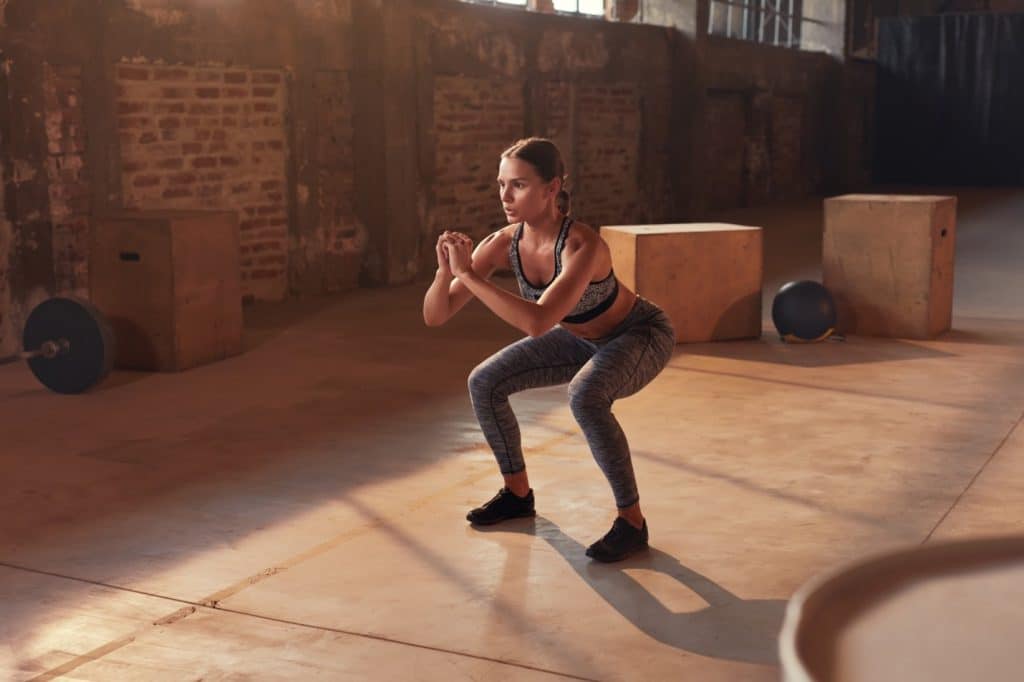Commonly mis-defined and misunderstood, find out what functional training actually is and why it is critical to endurance sports performance.

If you’re reading this, you’re likely an athlete and therefore, have likely heard of the term, ‘Functional Training.’ The reason for this blog post is that this term has been defined in many different ways over the years, and I wanted to clarify what this term means in its purest sense and therefore, how it should be applied.
The term, Functional Training, was first coined by renowned Swiss physiologist, Per-Olof Astrand in his 1986 landmark article, ‘Why Exercise? An Evolutionary Approach.’ (1). Specifically, in this article, Dr. Astrand notes, “If animals are built reasonably, they should build and maintain just enough, but not more structure than they need to meet functional requirements.” In short, this quote defines functional training as the focus on why someone should exercise, versus focusing on how exercise changes their physique.
In the fitness world, functional training was often used to describe exercises that mimicked the movement patterns of daily life (ex: Squat and overhead press = lifting groceries from the floor to an overhead cabinet). As you can see from this example, this functional movement pattern requires a full body movement, and thus, multiple joints are involved, and perhaps multiple planes of movement. The fitness industry took notice of many of these ‘movements,’ and more or less redefined functional training to mean any exercise that is a compound exercise (exercises that use multiple muscle groups), that utilizes the full body and often, in multiple planes of motion.
Since we’re discussing the word ‘functional,’ it is helpful to understand what the definition of it is. According to the Oxford Dictionary, Functional is defined as, ‘of or having a special activity, purpose, or task; relating to the way in which something works or operates.’
As you can see, nowhere in this definition is there anything about moving multiple joints and/or in multiple planes of movement.
Application to Endurance Sports
Before I go any further, I want to make it abundantly clear that I fully believe that full-body movements are important for all populations as they provide tremendous benefits and specific to endurance sports, I believe that all endurance athletes should be doing them.
That said, in the purest sense of the term, a functional movement is simply a movement that mimics the mechanics of a sports movement. This is also how it is defined in our UESCA coach certifications. It is important to note that some sport-specific functional movements might be deemed contraindicated by others (including fitness professionals). For these exercises, while you may not want to use a heavy load, make no mistake about it, some of the movements and body positions that endurance athletes are accustomed to are weird and ‘not your typical normal person’ type of body position (i.e. riding in the aerobar position)!
Let’s discuss an example of a movement that is often considered contraindicated but is functional and safe, if done properly with the right load management. Squatting where the knees go past the toes in the sagittal plane was often thought to put too much pressure on the knees, and therefore contraindicated. Additionally, deep squatting was also thought to be considered contraindicated. While this has been debunked, these beliefs still exist today. For starters, when you squat down to pick up something you dropped, I can almost guarantee that your knees go past your toes… but I digress.
At the top of the cycling pedal stroke, right before the downstroke, which is the most powerful aspect of the pedal stroke, the knee is always ahead of the toes (see image below). Therefore, from the 12 o’clock to 3 o’clock foot/pedal position, the knee is likely in front of the toes (also illustrated in the image below).

Functionally, this translates to performing squats with your knee ahead of your toes at the bottom range of motion. Additionally, your ankle angle during the downstroke should also impact your squat form. For example, if you pedal with your heel up, you are emphasizing more quadriceps versus glutes and hamstrings – so, placing a shim under your heels when you squat will functionally engage more of the active leg musculature (quads) that is functional to your cycling downstroke.
Specific to running, the soleus (calf muscle) is very important – especially with respect to stabilization. Due to the insertion/origin locations of the muscle, the most effective way to isolate the soleus is a seated calf raise. I noted this because while there are a couple of degrees of hip and knee extension with this exercise, the majority of the movement is from a single joint (ankle). This demonstrates that a functional strengthening exercise is not necessarily multi-joint, and/or multi-planar.
Overkill?
Endurance sports consist of A LOT of repetitive motions – hence the prevalence of overuse injuries. This begs the question, if an athlete incorporates strength training into their program, should they focus on the same muscles (primary movers) that they use during the sport, or should they focus on ancillary muscles that support the primary movers?
Using the cycling example above, should a cyclist focus on their quads (as noted above) by doing squats, or should they perhaps focus on glute medius exercises that might help to reduce internal hip rotation at the top of the pedal stroke – thus creating a more powerful pedal stroke?
While each person is different and therefore the above question is not possible to answer without context, it is important to note that just because an exercise is ‘functional,’ it doesn’t mean that an athlete should be doing it.
Real World (Sport) Functional Training
While we’re defining functional training in this article, we should also look to define what strength training is. Like functional training, strength training (often termed, resistance training) is all too often associated with some sort of strength training equipment (i.e., dumbbell, barbell, selectorized machine, theraband, etc…). However, simply defined, strength training is any type of exercise that causes one’s muscles to contract against an external force. Sticking with the cycling example above, putting one’s bike into a big gear and pushing down hard on the pedals is strength training… and more specifically, functional strength training. In fact, you can’t get much more functional strength to cycling than pedaling under heavy loads.
One of my favorite functional cycling core exercises is to ride in a moderately hard gear up a hill while keeping my palms resting on the handlebars and keeping my fingers away from the handlebars. This eliminates any potential stabilization from the arms, and thus places all of the stabilization requirement to keep the upper body still from the inner core musculature.
Keep Things in Perspective

While this article looks to define functional exercises as it pertains to endurance sports, let’s be very clear – for most everyone, the first priority is overall strength and fitness and secondarily, sports performance. As noted above, I’m a 100% believer that compound, full-body exercises are the best for overall strength and especially when someone wants to maximize their time doing a workout. So, for endurance athletes, full-body exercises should most definitely be included in any sort of strength program, in addition to ‘functional’ exercises… that may or may not also be compound and/or full-body exercises.
Summary
The point of this article is to provide a nuanced approach to what functional training is… and isn’t. While I suppose this blog post is largely an opinion piece, I hope that it provides food for thought (even if you don’t agree with me) regarding what a functional movement is and what to be aware of when you hear this term thrown around. So whether you’re an athlete, personal trainer, strength coach or endurance sports coach, I hope that this article provides some value to you – or at the very least, a different perspective on a commonly used term.
- Astrand PO. Why exercise? An evolutionary approach. Acta Med Scand Suppl. 1986;711:241-2. PMID: 3465208.








